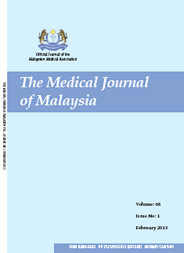MJM, Vol 70 Supplement 1 September 2015
Mathematical modelling and health policy
Department of Epidemiology, Faculty of Public Health, Mahidol University, Thailand
ABSTRACT
I have been the PI for three projects: 1) Cost-utility analysis of seasonal influenza vaccination among school children in Thailand (funded by WHO HQ); 2) Cost-utility analysis of seasonal influenza vaccination among pregnant women in Thailand (funded by WHO HQ); and 3) modelling of seasonal influenza in Thailand (funded by the National Science and Technology Development Agency (NSTDA), Thailand). The first resulted in a paper in PLoS Medicine (“Seasonal influenza vaccination for children in Thailand: a cost-effectiveness analysis”). The last led to a paper in the American Journal of Epidemiology (“Mortality attributable to seasonal influenza A and B infections in Thailand, 2005-2009: a longitudinal study”). The publication for the second project is in preparation. I was also the PI for the project “An economic evaluation of tetravalant dengue vaccine in Thailand” (funded by WHO Thailand).
My team developed a framework to evaluate the cost-effectiveness of seasonal influenza vaccination policies in Thailand and used it to consider annual vaccination of both children and pregnant women. We adopted a Bayesian evidence-synthesis framework, expressing uncertainty in parameters through probability distributions derived by fitting the model to prospectively collected laboratory-confirmed influenza data from 2005-2009, by meta-analysis of clinical trial data, and by using prior probability distributions derived from literature review and elicitation of expert opinion. We performed sensitivity analyses using alternative assumptions about prior immunity, contact patterns between age groups, the proportion of infections that are symptomatic, cost per unit vaccine, and vaccine effectiveness. Vaccinating school-aged children and pregnant women are likely to be cost-effective in Thailand in the short term, though the long-term consequences of such a policy cannot be reliably predicted given current knowledge of influenza epidemiology and immunology. Our work provides a coherent framework that can be used for similar analyses in other low- and middle-income countries.
